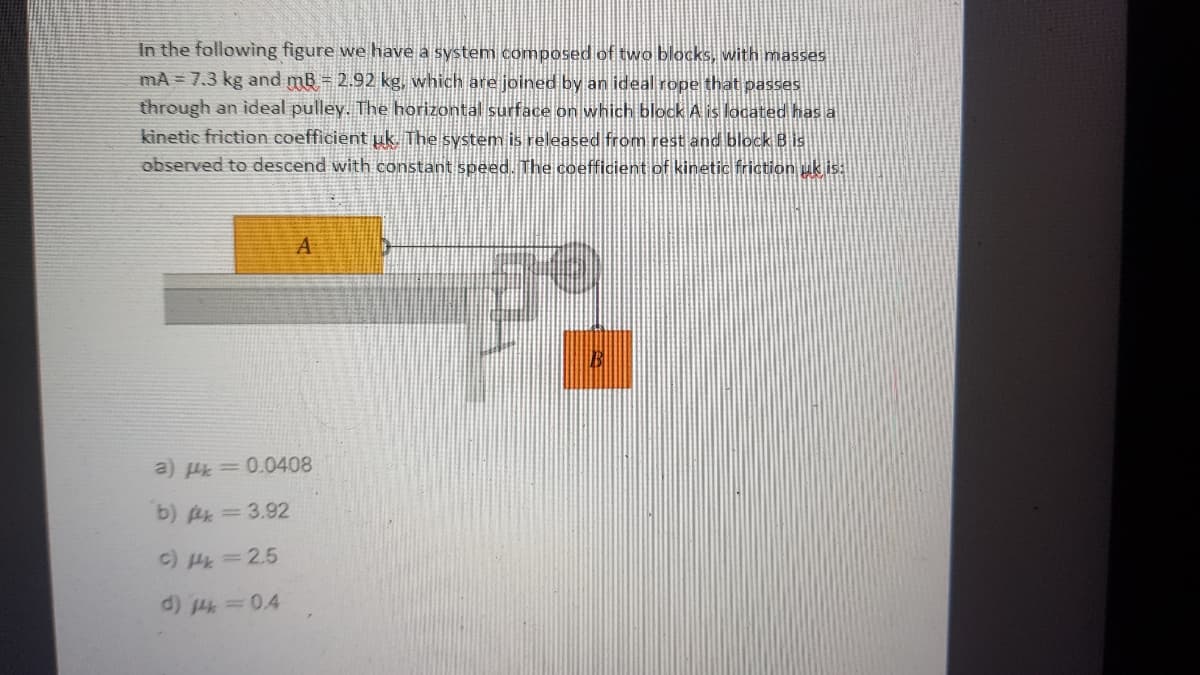In the following figure we have a system composed of two blocks, with masses mA = 7.3 kg and mB = 2.92 kg, which are joined by an ideal rope that passes through an ideal pulley. The horizontal surface on which block A is located has a kinetic friction coefficient uk. The system is released from rest and block B is observed to descend with constant speed. The coefficient of kinetic friction uk is: A
In the following figure we have a system composed of two blocks, with masses mA = 7.3 kg and mB = 2.92 kg, which are joined by an ideal rope that passes through an ideal pulley. The horizontal surface on which block A is located has a kinetic friction coefficient uk. The system is released from rest and block B is observed to descend with constant speed. The coefficient of kinetic friction uk is: A
Classical Dynamics of Particles and Systems
5th Edition
ISBN:9780534408961
Author:Stephen T. Thornton, Jerry B. Marion
Publisher:Stephen T. Thornton, Jerry B. Marion
Chapter9: Dynamics Of A System Of Particles
Section: Chapter Questions
Problem 9.19P
Related questions
Question

Transcribed Image Text:In the following figure we have a system composed of two blocks, with masses
mA = 7.3 kg and mB = 2.92 kg, which are joined by an ideal rope that passes
through an ideal pulley. The horizontal surface on which block A is located has a
kinetic friction coefficient uk. The system is released from rest and block B is
observed to descend with constant speed. The coefficient of kinetic friction uk is:
A
a) H= 0.0408
b) Ak=3.92
c) H=2.5
Expert Solution
This question has been solved!
Explore an expertly crafted, step-by-step solution for a thorough understanding of key concepts.
Step by step
Solved in 5 steps with 4 images

Recommended textbooks for you

Classical Dynamics of Particles and Systems
Physics
ISBN:
9780534408961
Author:
Stephen T. Thornton, Jerry B. Marion
Publisher:
Cengage Learning

Classical Dynamics of Particles and Systems
Physics
ISBN:
9780534408961
Author:
Stephen T. Thornton, Jerry B. Marion
Publisher:
Cengage Learning